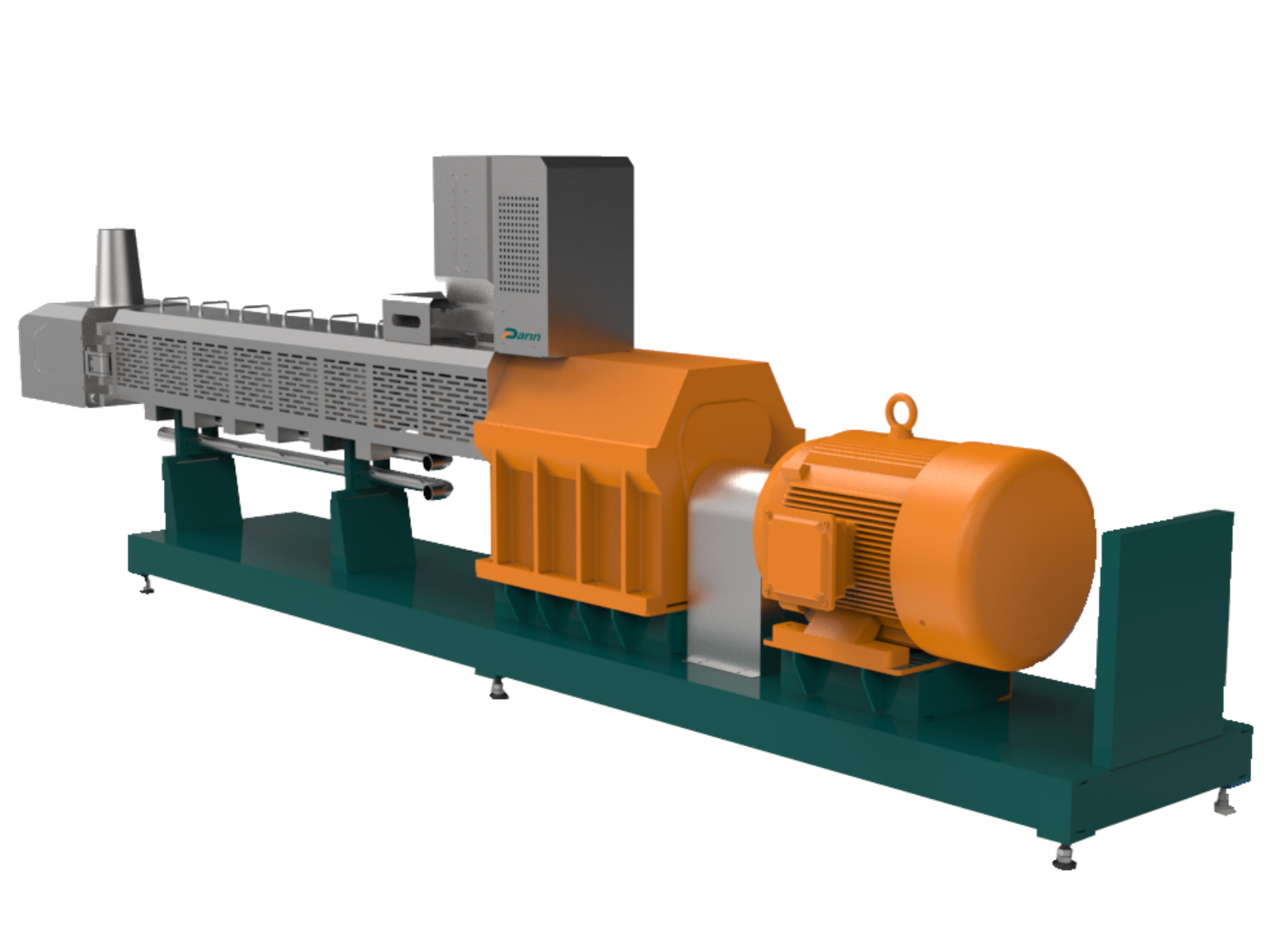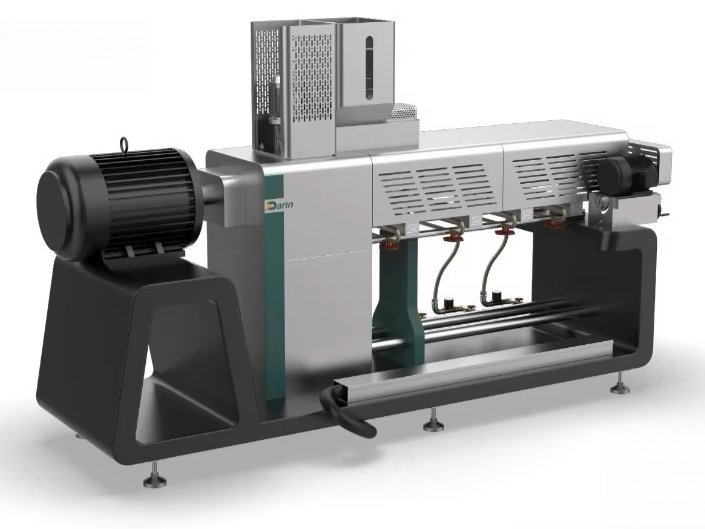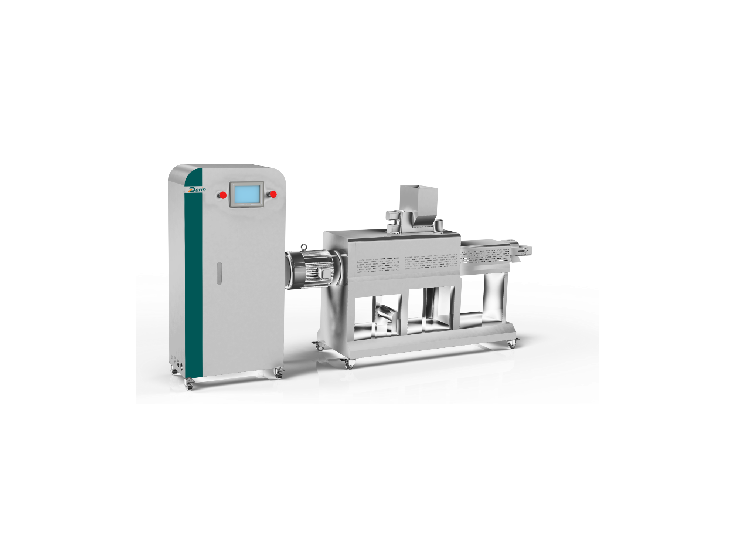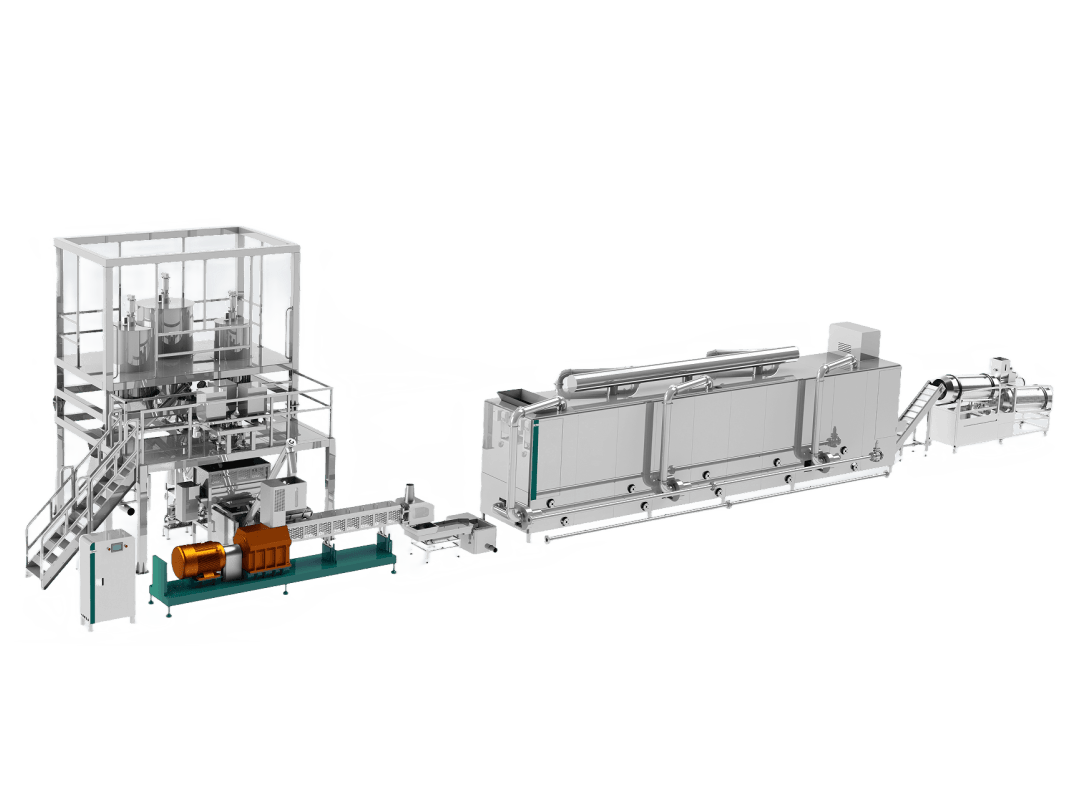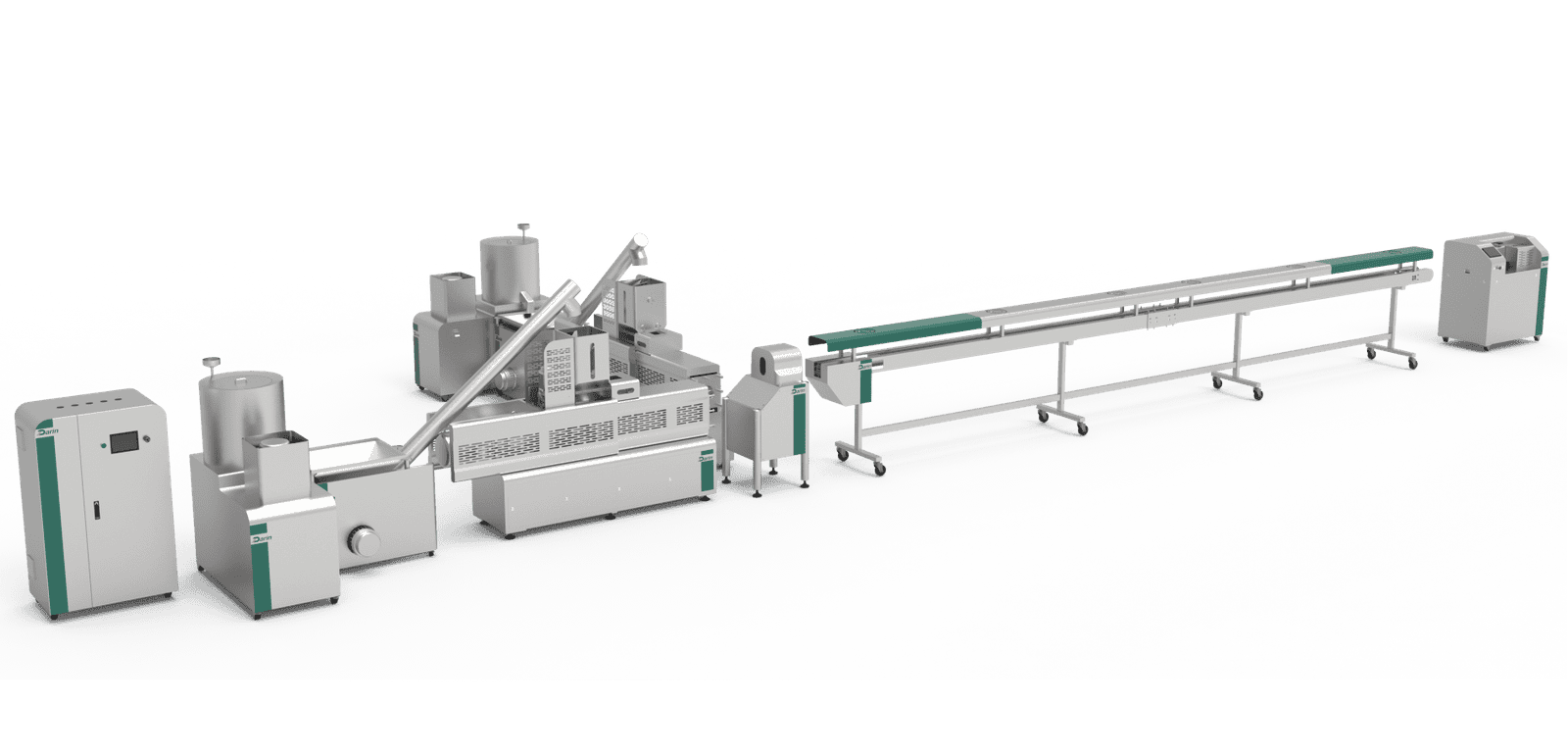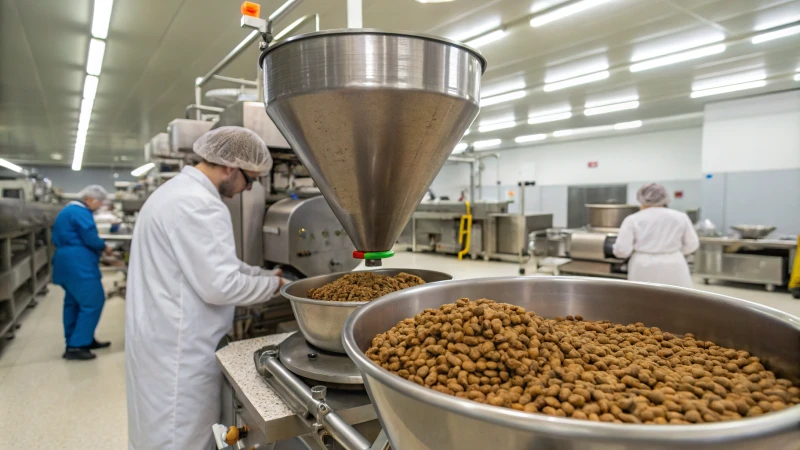
Ever thought about how your furry friend's favorite meal comes to be?
Dog food comes from a mix of chosen ingredients, exact cooking methods and strict quality checks. The process includes blending raw materials, cooking by extrusion or baking, drying if needed and packaging, all while following safety rules. The food is nutritious. It is safe. Pets find it appealing.
Knowing the manufacturing process guarantees high quality for your pet and offers knowledge of the complex rules supporting pet health worldwide. I recall my first visit to a dog food factory. It felt like entering a realm where science and love come together. Workers choose raw ingredients with great care. Cooking and packaging happen with precise methods. Every step shows dedication to quality and safety. We should explore each phase of production to see how makers reach top levels of nutrition and safety.
Dog food is cooked using extrusion methods.Vrai
Extrusion is a common method used to cook and shape dog food.
Dog food manufacturing lacks safety standards.Faux
The process adheres to stringent safety standards for pet health.
What Ingredients Are Used in Dog Food Manufacturing?
Ever looked into your dog's bowl and thought about what's truly inside? Let's discover the truth about dog food ingredients and what they mean for your pet.
Dog food production focuses on proteins, carbohydrates, fats, vitamins and minerals. People use chicken, beef, corn, wheat, rice and fish in recipes. The addition of preservatives helps keep the food fresh. Flavor enhancers improve the taste too.
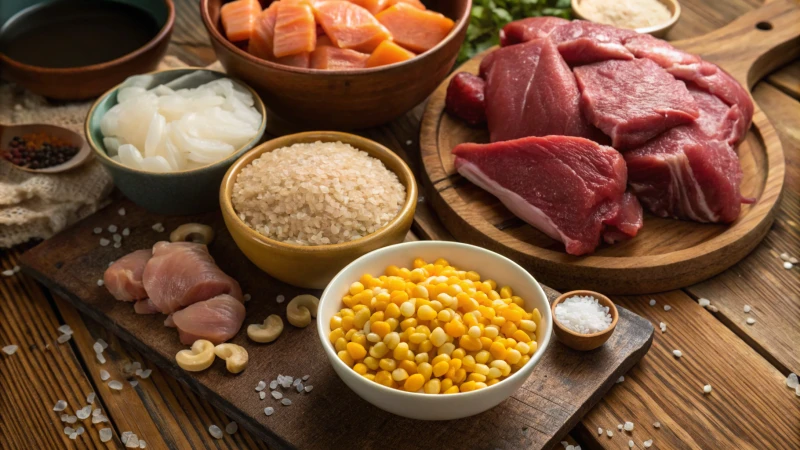
Les protéines : Les éléments constitutifs
When I got my dog, I looked at every dog food label. Protéines stood out as the heroes of dog food. They provide important amino acids necessary for muscle growth and overall health. Most brands use chicken1, beef, lamb, and fish. Once, I tried cooking dog treats with chicken—it was really an adventure! Often, manufacturers choose animal by-products because they are cheaper, but quality may differ. Some add plant proteins like soy or beans.
Les glucides : Fournisseurs d'énergie
Glucides give energy! I found out they are the main power source for dogs when I searched for my energetic dog. Ingredients like corn, wheat, barley, and rice are common in dog food formulations. These grains are inexpensive and help bind the kibble together. For dogs with delicate stomachs like mine, some brands use potatoes or peas as alternative carbohydrate sources.
Fats: Essential for Vitality
Fats keep coats shiny and skin healthy. I found this out when I wanted to fix my dog's dull coat. Graisses provide key fatty acids and help absorb nutrients.
| Source de matières grasses | Bénéfice |
|---|---|
| Graisse de poulet | Santé de la peau et du pelage |
| Huile de poisson | Omega-3 for brain function |
| Graines de lin | Propriétés anti-inflammatoires |
Balance is everything—enough energy without getting overweight.
Vitamins and Minerals: For Balanced Nutrition
Vitamins and minerals support your dog's health. Calcium is important for strong bones while vitamins A, D, E, and K perform various roles from helping vision to blood clotting. Many dog foods have added vitamin supplements to cover all dietary needs.
Preservatives and Flavor Enhancers
Keeping food fresh and tasty is important. Preservatives like BHA or natural ones like Vitamin E do this job effectively. Some foods include liver or other palatable ingredients to enhance taste.
Learn more about how these parts are chosen ici2. Knowing this helps pet owners decide on what to feed their pets.
Chicken fat promotes healthy skin in dogs.Vrai
Chicken fat is rich in essential fatty acids, beneficial for skin health.
Soy is a common carbohydrate source in dog food.Faux
Soy is used as a protein source, not primarily for carbohydrates.
What’s the Story Behind Extrusion in Pet Food?
Ever thought about how your furry buddy's kibble gets created?
The extrusion process in pet food production mixes raw materials and cooks them under high pressure and heat. The extruder shapes these ingredients into the final product. This method creates a consistent product and probably increases nutritional value. Uniform food pieces result from this approach.

Les bases de l'extrusion
Picture a kitchen with all ingredients laid out, ready to cook something tasty. This is how extrusion starts in pet food production. It begins by crushing raw ingredients like meat meal3 and grains into tiny pieces. It's like mixing a smooth batter. Then, vitamins and minerals get added, like spices to a dish.
Cuisson et mise en forme
The mixed ingredients go into a big pressure cooker called the extruder. It receives heat and pressure, similar to baking bread. This process not only cooks the mix but also changes its structure, so pets digest it easily. The mix comes out of the extruder like dough through a cookie cutter, forming different shapes like pellets or kibbles.
Checking Quality and Consistency
When baking, I always check temperature, pressure, and moisture to get everything right. The same happens during extrusion. These conditions are carefully watched to keep quality and consistency according to normes industrielles4. They ensure each batch of pet food is up to the mark—yes, every batch.
| Aspect | Détails |
|---|---|
| Matières premières | Meat meal, grains, vitamins, minerals |
| Key Process | Heat, pressure, shaping through die |
| Contrôle de la qualité | Temperature, pressure, moisture levels |
| Avantages | Extended shelf life, nutritional enhancement |
Avantages de l'extrusion pour les aliments pour animaux de compagnie
Extrusion increases shelf life by lowering moisture content just like grandma’s secret recipe. It also allows for special shapes and textures. Plus, it helps add functional ingredients that really improve our pets' health.
Emerging Trends in Pet Food Extrusion
Exciting new trends in extrusion better pet meals as manufacturers try to increase nutritional quality and meet specific needs with an increasing focus on alimentation des animaux de compagnie5. Probiotics and prebiotics could be added directly to kibble through advanced extrusion techniques offering tasty treats with health advantages.
Extrusion is central to pet food production due to its ability to create high-quality products efficiently. With ongoing progress in technology advancements, it’s exciting to see how it can meet changing consumer demands for healthier choices.
Even in smaller amounts, modified extrusion technologies offer flexibility while maintaining quality—crucial for new brands wanting market success.
Considérations pour les fabricants
Manufacturers need to grasp the details of technologie d'extrusion6. Costs might be high but the benefits such as richer product quality and marketability are worth the investment—it means gaining a competitive edge in the pet food industry.
Extrusion enhances pet food shelf life.Vrai
Extrusion reduces moisture content, extending shelf life by preventing spoilage.
Extrusion decreases the digestibility of pet food.Faux
The process gelatinizes starches and denatures proteins, enhancing digestibility.
How Does Quality Control Impact the Dog Food You Buy?
Have you ever thought about how food for your dog stays safe and healthy?
Quality control in dog food production watches and organizes production steps. It checks the food's safety, nutrition and meets rules. Testing ingredients, watching the process and checking the final product form part of this task.
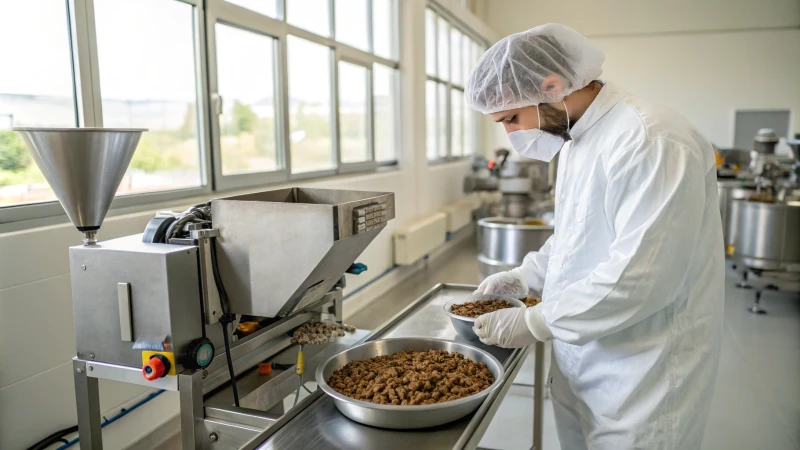
Understanding the Importance of Quality Control
I often wonder how my dog's food reaches his bowl. A careful process checks that every mouthful is safe and healthy. Quality control in dog food production is not just one stage; it is the backbone that protects each batch from start to finish, beginning with ingredient selection, through to conditionnement7 and delivery. We focus on safety and nutrition.
Principaux éléments du contrôle de la qualité
Approvisionnement en ingrédients
Imagine shopping for a fancy dinner party. We choose only the finest ingredients. Every item must pass strict tests for things like pesticides or heavy metals before it's fit for pet meals.
Ingrédient Tested For Viandes Hormones, Antibiotics Céréales Pesticides Vitamines Purity Surveillance des processus
During production, a team of experts checks the temperature, moisture, and timing. They make sure each meal is just right. This care stops harmful bacteria from growing and keeps the nutrients intact. Pets need this nourishment.
End-Product Evaluation
Finally, the food goes through detailed taste tests and nutritional checks. It's like someone tasting each meal first to meet high standards for safety and quality. We want only the best for pets.
Regulatory Compliance and Certifications
Following rules like those from the FDA8 is like earning a special badge. It gives you confidence in your pet's diet. Companies often seek certifications like ISO 22000 to show their commitment to quality.
- Benefits of Certifications
- Builds trust with customers
- Opens doors for international trade
- Really improves how operations run
Challenges in Quality Control Implementation
Putting these quality checks in place isn't easy. It's like following a recipe with slightly different ingredients each time, depending on where they come from. As companies grow, this becomes more complex. Medium and large manufacturers invest in new technology and training to handle these challenges9.
All dog food ingredients are tested for pesticides.Vrai
Dog food manufacturers test grains and other ingredients for pesticides.
FDA guidelines are optional for dog food manufacturers.Faux
Adhering to FDA guidelines is mandatory for ensuring product safety.
How Do Certifications Ensure Safety in Pet Food Production?
Ever wondered what keeps your pet's food both safe and healthy? Let's explore the world of certifications that guarantee pet food safety.
Des certifications telles que ISO 22000, HACCP et BPF are crucial for pet food production. They provide rules to keep products safe and stop any contamination. These rules also help in maintaining high quality. Consumer trust and industry credibility often grow because of these standards.
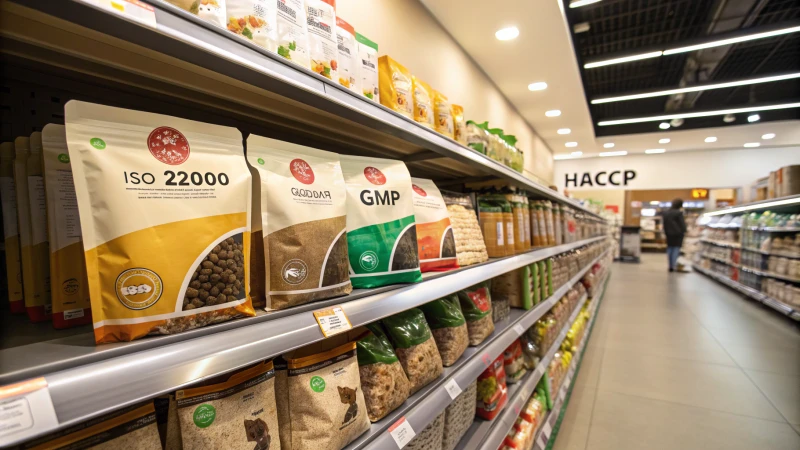
Comprendre les certifications clés
I remember when I first explored pet food production. It felt like a maze full of rules and standards. Certifications such as ISO 22000, HACCPet BPF guided me through this. These certifications help every bag of pet food meet very high safety standards.
- ISO 22000: This certification is like a detailed checklist. It covers all steps from buying ingredients to delivering the product. It keeps safety a top priority from start to finish.
- HACCP: This acts like a food safety detective. It finds potential hazards like biological or chemical dangers before they turn into problems. Acting proactively helps prevent risks.
- BPF: This ensures steady quality in manufacturing processes. It maintains consistency across production batches.
| Certification | Domaine d'intervention | Avantages |
|---|---|---|
| ISO 22000 | Safety Management | Comprehensive food safety system |
| HACCP | Risk Analysis | Minimizes contamination risks |
| BPF | Contrôle de la qualité | Garantir une qualité constante des produits |
Role in Medium to Large Scale Production
Reflecting on my time with Darin Machinery, I see how crucial these certifications are for larger pet food production10. They help products meet strict safety rules and facilitate international trade by matching global standards. In Europe, manufacturers must follow EU feed hygiene rules, while the U.S. requires FDA compliance.
Consumer Trust and Brand Reputation
Certifications build consumer trust. When I began showing certified products, confidence rose quickly. People want to trust that their pets receive safe and quality food. Certifications on packaging act like a badge, showing excellence and commitment.
Also, certifications involve regular checks and updates for ongoing compliance. This ongoing process helps me handle potential safety issues and strengthens brand reputation.
Importance in Emerging Markets
Expanding to places like Southeast Asia and Latin America showed me that certifications offer a competitive edge. These markets grow rapidly, and certified pet food products are in demand.
Prioritizing certifications helps me offer safe and attractive products to customers seeking quality options.
Continuous Improvement and Training
Getting these certifications has been a path of ongoing growth and learning for my team. Educating our workforce on new safety standards is important. This dedication reinforces our position as leaders in the industry.
For more on how certifications affect consumer trust and industry practices, explore this topic11. Understanding certifications on a broad scale is very important.
ISO 22000 covers all production stages.Vrai
ISO 22000 ensures safety protocols are integrated at every step.
GMP focuses on risk analysis in pet food.Faux
GMP ensures product quality, not risk analysis like HACCP.
How Are Technological Innovations Shaping the Future of Dog Food Manufacturing?
Maybe you think about how technology is changing the dog food business?
Technological changes like automation, data analysis and green methods are changing how dog food is made. These advances increase efficiency, raise product quality and satisfy the rising demand for healthier, tailored pet nutrition. This trend is very clear. Many consumers look for better options. Healthy dog food matters to them.

Automation in Manufacturing
I remember the first time I saw an automated extrusion line. The precision and speed captivated me. Automation is not only about advanced technology; it's about reducing mistakes and increasing output while keeping quality high. Imagine kibble with perfect consistency every time. It's like having a chef cooking extremely fast. Companies investing in systèmes automatisés12 often see a significant boost in efficiency.
L'analyse des données pour le contrôle de la qualité
Years ago, quality control was a hands-on task that could be stressful. Today, it relies on data. Sensors and real-time data transform it into a science. Problems can be caught early, so every batch meets standards. Every bite my pet takes is backed by accurate data and that really comforts me.
| Benefits of Data Analytics |
|---|
| Amélioration du contrôle de la qualité |
| Réduction des déchets |
| Enhanced Predictive Maintenance |
Pratiques durables
When I think of dog food sustainability, it reminds me of long walks with my pet and thinking about our environmental effects. Many manufacturers now use renewable energy and recyclable packaging, adopting sustainable production13 practices that benefit the planet and pets alike - healthier pets, happier planet.
Nutrition personnalisée
Remember guessing the best food for your pet? Those days are disappearing. We use modern algorithms to personalize nutrition. Whether it's age, breed or health concerns, we customize like a nutritionist for your dog using advanced algorithms14.
The Role of Robotics
In the past, robotics felt like a sci-fi dream. Now, robotic arms are common, handling sorting and cooking with precision. It's fascinating to see these machines create consistency and speed in production.
Future Trends
The future is bright with AI and machine learning. I'm eager to see how these will improve customization and efficiency in dog food manufacturing. It's a very exciting time in an industry growing to meet the need for high-quality pet nutrition.
The future of dog food is thrilling - a mix of science, sustainability, and care that promises a better world for pets.
Automated systems reduce human error in dog food production.Vrai
Automation enhances precision and output capacity, minimizing errors.
Data analytics decreases product quality in dog food manufacturing.Faux
Data analytics improves quality control by monitoring and detecting anomalies.
How Can Emerging Markets Benefit from Advanced Pet Food Production Techniques?
Picture the excitement as new markets grow using the latest pet food technology.
Emerging markets probably profit from modern pet food production techniques. These methods improve nutritional quality. They also lower costs. More consumers want premium products. Production efficiency increases. Product variety expands. Market growth follows.
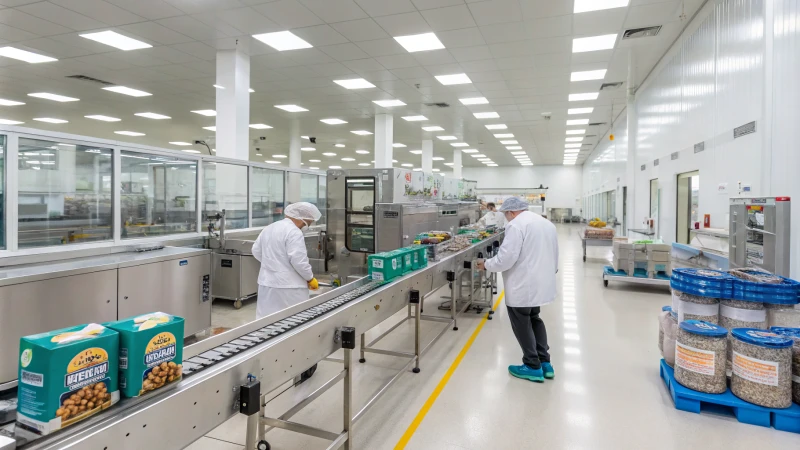
Better Nutrition
Improving pet food means a lot to me, as I want the best for my pets. New methods like extrusion and vacuum coating keep nutrients well distributed and preserved. Pet owners who care deeply about pet diets get products that meet specific needs. Quality is important.
| Technique | Avantages | Exemple |
|---|---|---|
| Extrusion | Rétention des nutriments | Better digestion |
| Revêtement sous vide | Répartition uniforme des nutriments | Enhanced flavor |
Saving Costs and Time
Reducing costs without losing quality is a tough goal. Using ingredients wisely and automating processes lowers waste and expenses. This helps in areas with less money to spend, ensuring good pet food stays affordable.
Meeting Customer Needs
The move to premium pet foods is like a personal quest for me. It’s about giving owners choices that match their healthy lifestyles. New methods help create special treats like dental chews and protein jerky, meeting demand for top options.
Sustainability and New Ideas
I think new ideas must also care for the planet. Using protéines alternatives15 and by-products is more than a trend; it’s a duty. These methods cut environmental harm and attract eco-friendly buyers while keeping markets competitive.
Growing Market Reach
Helping manufacturers meet global standards is one of my big achievements. Advanced methods help them get certifications like CE et ISO, which open international markets. This raises their status in the world pet food industry.
Working with big names like General Mills16 has of course really helped build trust and pave the way for expansion. These partnerships turn big dreams into reality.
Advanced techniques improve pet food nutritional value.Vrai
Techniques like extrusion enhance nutrient retention and distribution.
Emerging markets can't meet global pet food standards.Faux
Advanced techniques help meet international quality standards.
Conclusion
Dog food manufacturing involves selecting ingredients, cooking through extrusion or baking, ensuring quality control, and adhering to safety standards to produce nutritious and appealing pet food.
Chicken protein is a highly digestible source that supports muscle maintenance and repair in dogs. ↩
Explore factors influencing ingredient selection to understand the balance between nutrition, cost, and palatability. ↩
Exploring what meat meal is helps understand its role as a primary ingredient in many pet foods. ↩
Learn about standards that ensure quality and consistency in pet food manufacturing. ↩
Understanding the significance of pet nutrition can guide better dietary choices for pets. ↩
Discover how extrusion technology impacts cost-efficiency and product quality in pet food manufacturing. ↩
Explore how packaging standards affect product preservation and consumer safety. ↩
Discover the FDA's role in regulating pet food safety. ↩
Understand the difficulties faced by manufacturers in maintaining quality control. ↩
Discover how certifications help large producers maintain safety standards and market competitiveness. ↩
Learn about the role of certifications in building consumer confidence and enhancing brand reputation. ↩
Discover how automation boosts efficiency and precision in dog food production, enhancing overall productivity. ↩
Learn about eco-friendly practices reducing environmental impact in pet food production. ↩
Explore how algorithms create customized nutrition plans for dogs based on specific needs. ↩
Understand the advantages of alternative proteins in meeting sustainability goals and dietary needs. ↩
Learn how partnerships with global brands can elevate a company's standing in the international market. ↩


